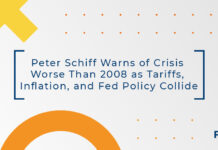 Ethereum gas fees reached their lowest level in years today, as the average fee dropped below 2 gwei. The record-low gas fees are due to a decline in Ethereum base layer activity as more users move to Layer-2 networks.
Ethereum gas fees reached their lowest level in years today, as the average fee dropped below 2 gwei. The record-low gas fees are due to a decline in Ethereum base layer activity as more users move to Layer-2 networks.
L2 networks have become more attractive and have seen more usage since the Dencun upgrade. The upgrade significantly reduced transaction costs on Layer-2 networks, making it impossible for the Ethereum mainnet to compete even as gas fees reached record lows.
Ethereum L2 growth leaves mainnet struggling for activity
Ethereum L2s have posed a threat to activity on the mainnet as far back as 2022 when they were accounting for around 50% of all Ethereum transactions. However, the dominance of L2 networks has increased significantly over the last six months.
According to data from blockchain analytics provider IntoTheBlock, the top three L2 networks were responsible for 82% of transaction shares on Ethereum by April 2024. This surge happened after the Dencun upgrade when gas fees on Ethereum L2s fell to a new low.

Since the upgrade, Ethereum L2s gas fees have dropped to almost nothing, making it far cheaper for people to use. Data from GasFees.io show fees are as low as $0.00009 for ETH transfers on layer2 networks like OP Mainnet.
Meanwhile, fees are not the only reason users prefer Ethereum L2s. The networks also have higher transaction speeds compared to the Ethereum mainnet. On average, L2Beats data shows that Base processes 39 transactions per second (tps), while Arbitrum has 17.28 tps. By comparison, Ethereum has 12 tps.
Ethereum turns inflationary due to low fees
Although some people consider the low fees on the Ethereum network a good sign, they are already impacting the network by making the ETH supply inflationary. This implies that the network now issues more ETH as staking rewards compared to the amount of ETH burned as gas fees.
According to Ultrasound Money, the ETH supply has increased by 0.67% per year in the last seven days because the network issued 18,069.04ETH and burned only 2,655.46ETH.
Unsurprisingly, the turn of events started three months after the Dencun upgrade. Before then, the network had been relatively deflationary since the Merge in 2022 as its supply reduced slightly. The transition to inflationary could hurt ETH prices.
Martin Koppelmann, the co-founder of Gnosis, noted that the only solution to this is for Ethereum fees to increase. The network needs a base fee of 23.9 gwei for the network to burn enough gas fees to offset the ETH it issues as staking rewards.
He said:
“IMO Ethereum needs to get more L1 activity again and even if it sounds counterintuitive at such low rates, raising the gas limit can be part of a strategy.”
Meanwhile, Ethereum saw its largest outflow from staking pools since May this week after stakers withdrew over 122,000 ETH. This coincides with a period of volatility for the digital asset, during which it rose 9% in a week but fell 4% in the last 24 hours.
Source:cryptopolitan.com




